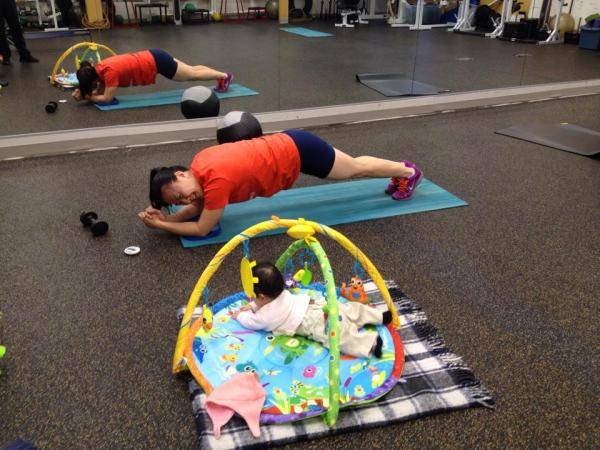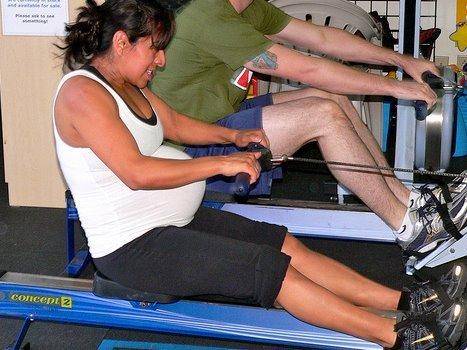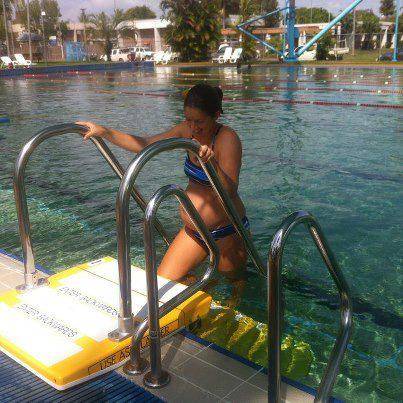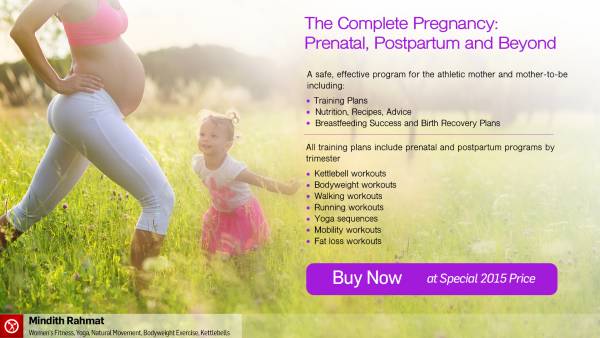Pregnancy seems at first to have a distinct beginning and a distinct end. You make a baby, you carry a baby, you deliver a baby. Voilà – it all takes ten months max.
That’s what I used to think, but after having three children I started to see things differently. Pregnancy affects your body long after your baby is born, and what you do before your pregnancy affects your experience as well. I don’t know if having a baby is a circle, or a sphere, or a time warp, but it’s definitely not a linear, nine-months-and-then-you’re-done kind of thing.
Where does exercise fit into that bigger picture? Here are a few insights into how exercise can benefit women before, during, and after pregnancy – as well as some stories of how other women have done it.
Before You Conceive: Get Regular
When it comes to exercise and getting pregnant, a healthy cycle is a critical starting point. If your cycles are irregular, it’s going to be hard to achieve pregnancy in the first place. Being lean is often associated with low fertility, but this common conception just scratches the surface of what’s really going on when women have irregular or absent periods.
Coach and nurse practitioner Vanessa Bennington detailed three issues that contribute to absence of menstrual cycles, aside from low levels of body fat. Here are a few snippets from her explanation:
Issue #1: Body Weight Not Body Fat
Falling below 85-90% of ideal body weight, no matter what body fat level, usually results in amenorrhea.
Issue #2: When Workouts Stop Working
If we are pushing ourselves to the max with two-a-days, super long workouts, and crazy metcons, while also eating very little in an attempt to lose body fat, then we run into problems.
Issue #3: Low Leptin Levels
Your level of leptin seems to not be specifically tied to body fat levels but on overall energy availability. And when leptin is low, so is GnRH and LH, and this makes ovulation and regular menstruation less likely.
Regulating your cycle is the first step to stepping into the pregnancy time warp. If your periods are absent or irregular, or if you just want to learn more about how to exercise for optimal menstrual health, read Vanessa’s article, What Really Causes Irregular Menstrual Cycles in Female Athletes?
During Your Pregnancy: Keep It Up and Change It Up
One of the most common questions many pregnant women ask is, “What kind of exercise can I do? Can I keep doing what I’m doing already?” Generally, in a normal pregnancy, you should be able to carry on in your training of choice. But if you’re curious about what that looks like during pregnancy (because it will look different), here are a few athletes from different disciplines we’ve covered in past articles.

Martial Arts
I loved reading Sally Arenault’s interview with BJJ black belt Emily Kwok, pictured above with her baby girl. A lot of pregnancy books put martial arts on the prenatal exercise black list, so it was fascinating to read how Emily continued to live her BJJ passion while pregnant. Here’s a tidbit from the interview:
I stopped training hard as soon as I found out I was pregnant and restricted my training partners to advanced belts whom I trusted and had established relationships with already. I trained until about three to four months, but taught until eight. I could demonstrate almost everything, but I had to stop some movements by about seven to seven and a half months. I was consistently weight lifting prior to becoming pregnant and I was able to continue working out till the last month. Lifting really saved me because I could control the movements I was making and how heavy my loads were. It really kept me sane. Being a very physically active person can work against you when you’re not able to express yourself as easily in a physical sense.
Read more about Emily’s experience in Sally’s interview.
CrossFit
CrossFit is an intense sport, and knowing how to modify is the key to keeping up with it while pregnant. CrossFit coach Danette “Dizzle” Rivera did an awesome interview with pregnant women at her CrossFit gym. Here’s how Danette described the women she encountered:
What I learned was that pregnant CrossFitters are not hardcore, crazed athletes determined to keep their personal lifting records intact at the expense of their and their baby’s health. They are conscientious mothers who believe CrossFit keeps them strong and prepares them for labor, delivery, recovery, and motherhood. And despite any paranoia and panic by some friends and family, CrossFit proves to be beneficial in many, if not different ways.
For as intense as CrossFit is, I got the universal feeling after speaking to each mother-to-be that they all share an ability to lay off when they felt they were pushing it too much.
If you’re a CrossFitter who wants to get some insights into how to balance training and pregnancy, read the rest of Danette’s article here.

Yoga
For me, yoga has always been a sort of prenatal exercise staple that I’ve enjoyed at all stages of pregnancy. Yoga has so much to offer pregnant women, and its benefits extend beyond physical exercise. Yoga instructor and mom of two Julie Rader shared the story of how yoga’s focus on breath helped her cope with a premature labor scare:
While in the hospital, my contractions were coming strong and every three minutes, so it looked as though I was going into labor. My husband reminded me to breathe. I thought to myself, “I teach students to breathe for a living and it was time to practice what I teach.” I started to breathe slowly and deeply and talk to the little one living in my womb. It was amazing to watch her heart rate go from 190 to 150 (normal for a fetus) beats per minute in a matter of seconds. My contractions lessened in intensity and duration, and I felt an overall sense of peace.
Read more about Julie’s experience with yoga in her article, Prenatal Yoga – The Art of Slowing Down and Listening.
Swimming
Swimming coach Hannah Caldas shared the experience of several high-level swimmers who kept up with their routines during pregnancy. One of them, Kristi Lee, even competed and won medals, as Hannah described:
Kristi’s routine didn’t change significantly after finding out she was pregnant. She swam six days a week, though towards the later part of the pregnancy her usual interval times became more challenging. At that point she relaxed on the times expected for herself. Her lung capacity also decreased, which she adjusted by ignoring breathing patterns and hypoxic sets.
As a true athlete, Kristi didn’t miss a workout, including the day she eventually gave birth to her daughter. Nadège was born one week late at a very healthy 8lbs 9oz and 21.5 inches long. Kristi received the go ahead to get back in the water three weeks post partum. She went on to swim at USMS nationals nine weeks after giving birth. Swimming helped Kristi remain sane. She shared with me, “I hated being pregnant, and being in the water was the only time I felt like myself.”
Swimming is considered one of the best exercises for pregnant women. Read more details and stories in Hannah’s article, Why Swimming Is the Best Exercise for Pregnant Women.

After Your Baby Is Born: Ease Back Into It
I have had both challenging, rocky postpartum experiences and easy, seamless recoveries. But no matter how easy the postpartum period is, coming back to exercise is hard. It’s hard to know when you should come back, and it’s hard to actually make a comeback when your body isn’t the same as it used to be. But one thing is for sure: taking it slow is a virtue when it comes to postpartum exercise.
That doesn’t make it easy, though. In fact, it makes it a lot harder. Erica Saint Clair shared her frustration with her postpartum body and slow progress:
Everyone gives me excuses. Yeah, I’ve got two kids now. I get that. I get that life has changed and it will (in theory) come back. But while you are on the path back, it sucks. It sucks to feel like the last five years of training have been for naught, and to feel alone, and tired. It sucks to wonder when you will have your energy back, or when lifting will be true personal records again.
The hardest part, though, is that no one talks about fitness post pregnancy, or the long haul back to where you were. They just say you will come back stronger. But when is that comeback? Does it ever really happen?
Read more about Erica’s comeback in her article, My Post Pregnancy CrossFit Comeback:
If you’ve been there, you know how frustrating it can feel to have to wait to get your fitness back. It’s a lesson in patience, and it doesn’t come overnight. But don’t give up while you’re in that interim period. Trust that what feels right now like a little bit of exercise, a light amount of weight, and a small amount of progress will do a lot in the long run, both for you and for your new baby.
Photos courtesy of CrossFit LA, Emily Kwok, and Hannah Caldas.







